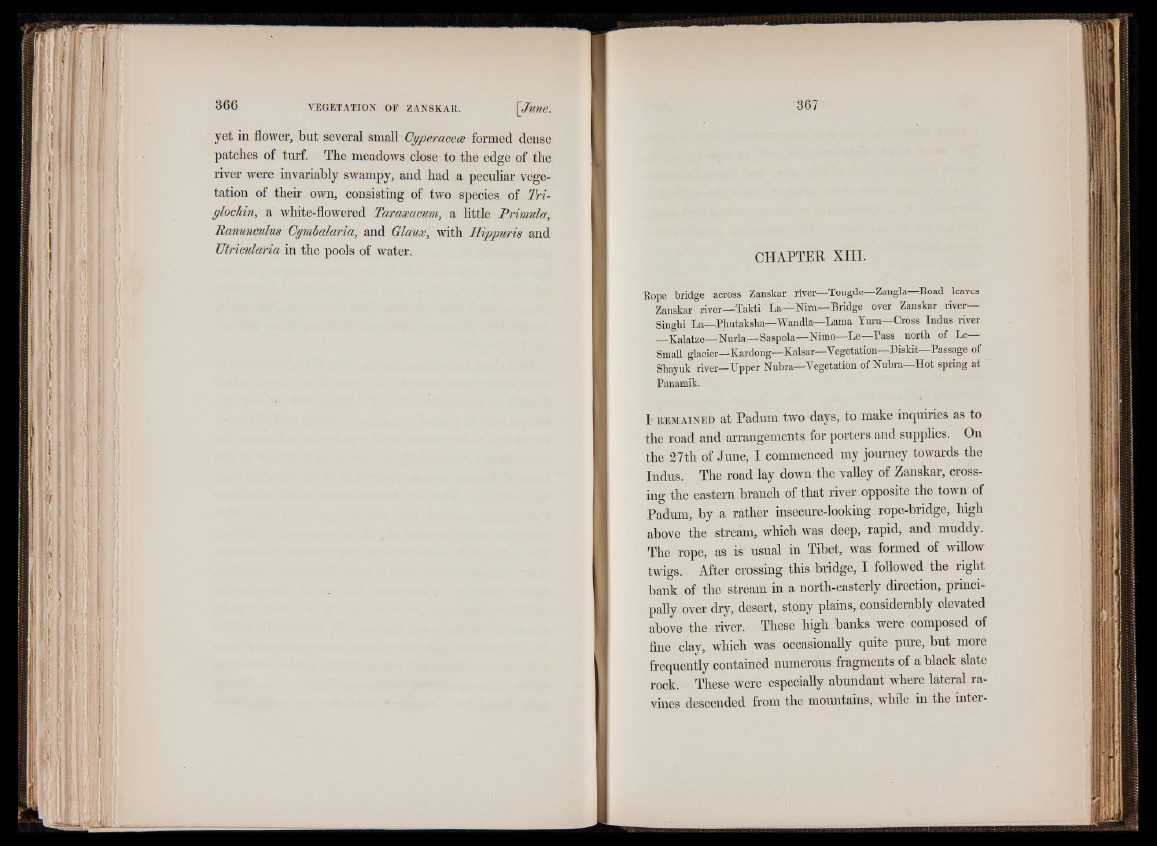
yet in flower, but several small Cyperacece formed dense
patches of turf. The meadows close to the edge of the
river were invariably swampy, and had a peculiar vegetation
of their own, consisting of two species of Tri-
ylochin, a white-flowered Taraxacum, a little Primula,
Ranunculus Cymbalaria, and Glaux, with Hippuris and
Utricularia in the pools of water. CHAPTER XIII.
Rope bridge across Zanskar river—Tongde—Zangla—Road leaves
Zanskar river—Takti La—Nira—Bridge over Zanskar river—
Singhi La—Phutaksha—Wandla—Lama Yura—Cross Indus river
Kalatze—Nuria— Saspola—Nimo—Le—Pass north of Le—
Small glacier—Kardong—Kalsar—Vegetation—Diskit—Passage of
Shayuk river—Upper Nubra—Vegetation of Nubra—Hot spring at
Panamik.
I r e m a in e d at Padum two days, to make inquiries as to
the road and arrangements for porters and supplies. On
the 27th of June, I commenced my journey towards the
Indus. The road lay down the valley of Zanskar, crossing
the eastern branch of that river opposite the town of
Padum, by a rather insecure-looking rope-bridge, high
above the stream, which was deep, rapid, and muddy.
The rope, as is usual in Tibet, was formed of willow
twigs. After crossing this bridge, I followed the right
bank of the stream in a north-easterly direction, principally
over dry, desert, stony plains, considerably elevated
above the river. These high banks were composed of
fine clay, which was occasionally quite pure, but more
frequently contained numerous fragments of a black slate
rock. These were especially abundant where lateral ravines
descended from the mountains, while in the inter